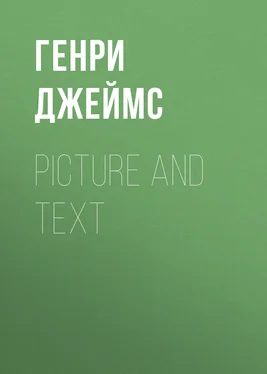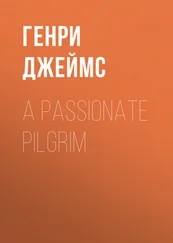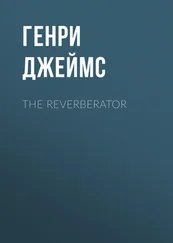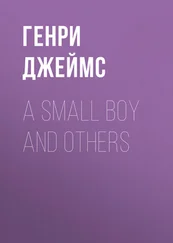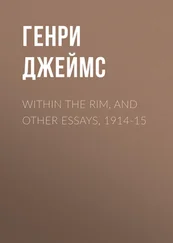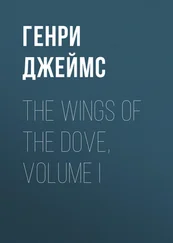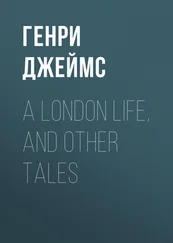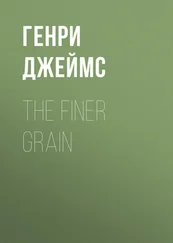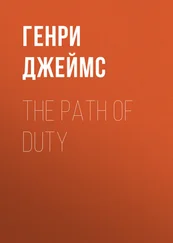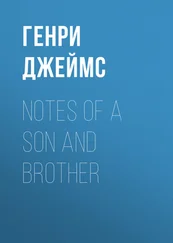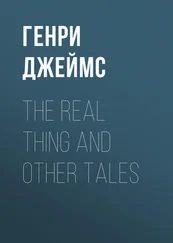Генри Джеймс - Picture and Text
Здесь есть возможность читать онлайн «Генри Джеймс - Picture and Text» — ознакомительный отрывок электронной книги совершенно бесплатно, а после прочтения отрывка купить полную версию. В некоторых случаях можно слушать аудио, скачать через торрент в формате fb2 и присутствует краткое содержание. Жанр: foreign_prose, foreign_home, visual_arts, foreign_antique, на английском языке. Описание произведения, (предисловие) а так же отзывы посетителей доступны на портале библиотеки ЛибКат.
- Название:Picture and Text
- Автор:
- Жанр:
- Год:неизвестен
- ISBN:нет данных
- Рейтинг книги:4 / 5. Голосов: 1
-
Избранное:Добавить в избранное
- Отзывы:
-
Ваша оценка:
- 80
- 1
- 2
- 3
- 4
- 5
Picture and Text: краткое содержание, описание и аннотация
Предлагаем к чтению аннотацию, описание, краткое содержание или предисловие (зависит от того, что написал сам автор книги «Picture and Text»). Если вы не нашли необходимую информацию о книге — напишите в комментариях, мы постараемся отыскать её.
Picture and Text — читать онлайн ознакомительный отрывок
Ниже представлен текст книги, разбитый по страницам. Система сохранения места последней прочитанной страницы, позволяет с удобством читать онлайн бесплатно книгу «Picture and Text», без необходимости каждый раз заново искать на чём Вы остановились. Поставьте закладку, и сможете в любой момент перейти на страницу, на которой закончили чтение.
Интервал:
Закладка:
Henry James
Picture and Text / 1893
NOTE
Two of the following papers were originally published, with illustrations, in Harper’s Magazine and the title of one of them—the first of titles has been altered from “Our Artists in Europe.” The other, the article on Mr. Sargent, was accompanied by reproductions of several of his portraits. The notice of Mr. Abbey and that of Mr. Reinhart appeared in Harper’s Weekly. That of Mr. Alfred Parsons figured as an introduction to the catalogue of an exhibition of his pictures. The sketch of Daumier was first contributed to The Century , and “After the Play” to The New Review .
BLACK AND WHITE
If there be nothing new under the sun there are some things a good deal less old than others. The illustration of books, and even more of magazines, may be said to have been born in our time, so far as variety and abundance are the signs of it; or born, at any rate, the comprehensive, ingenious, sympathetic spirit in which we conceive and practise it.
If the centuries are ever arraigned at some bar of justice to answer in regard to what they have given, of good or of bad, to humanity, our interesting age (which certainly is not open to the charge of having stood with its hands in its pockets) might perhaps do worse than put forth the plea of having contributed a fresh interest in “black and white.” The claim may now be made with the more confidence from the very evident circumstance that this interest is far from exhausted. These pages are an excellent place for such an assumption. In Harper they have again and again, as it were, illustrated the illustration, and they constitute for the artist a series of invitations, provocations and opportunities. They may be referred to without arrogance in support of the contention that the limits of this large movement, with all its new and rare refinement, are not yet in sight.
I
It is on the contrary the constant extension that is visible, with the attendant circumstances of multiplied experiment and intensified research—circumstances that lately pressed once more on the attention of the writer of these remarks on his finding himself in the particular spot which history will perhaps associate most with the charming revival. A very old English village, lying among its meadows and hedges, in the very heart of the country, in a hollow of the green hills of Worcestershire, is responsible directly and indirectly for some of the most beautiful work in black and white with which I am at liberty to concern myself here; in other words, for much of the work of Mr. Abbey and Mr. Alfred Parsons. I do not mean that Broadway has told these gentlemen all they know (the name, from which the American reader has to brush away an incongruous association, may as well be written first as last); for Mr. Parsons, in particular, who knows everything that can be known about English fields and flowers, would have good reason to insist that the measure of his large landscape art is a large experience. I only suggest that if one loves Broadway and is familiar with it, and if a part of that predilection is that one has seen Mr. Abbey and Mr. Parsons at work there, the pleasant confusion takes place of itself; one’s affection for the wide, long, grass-bordered vista of brownish gray cottages, thatched, latticed, mottled, mended, ivied, immemorial, grows with the sense of its having ministered to other minds and transferred itself to other recipients; just as the beauty of many a bit in many a drawing of the artists I have mentioned is enhanced by the sense, or at any rate by the desire, of recognition. Broadway and much of the land about it are in short the perfection of the old English rural tradition, and if they do not underlie all the combinations by which (in their pictorial accompaniments to rediscovered ballads, their vignettes to story or sonnet) these particular talents touch us almost to tears, we feel at least that they would have sufficed: they cover the scale.
In regard, however, to the implications and explications of this perfection of a village, primarily and to be just, Broadway is, more than any one else. Mr. Frank Millet. Mr. Laurence Hutton discovered but Mr. Millet appropriated it: its sweetness was wasted until he began to distil and bottle it. He disinterred the treasure, and with impetuous liberality made us sharers in his fortune. His own work, moreover, betrays him, as well as the gratitude of participants, as I could easily prove if it did not perversely happen that he has commemorated most of his impressions in color. That excludes them from the small space here at my command; otherwise I could testify to the identity of old nooks and old objects, those that constitute both out-of-door and in-door furniture.
In such places as Broadway, and it is part of the charm of them to American eyes, the sky looks down on almost as many “things” as the ceiling, and “things” are the joy of the illustrator. Furnished apartments are useful to the artist, but a furnished country is still more to his purpose. A ripe midland English region is a museum of accessories and specimens, and is sure, under any circumstances, to contain the article wanted. This is the great recommendation of Broadway; everything in it is convertible. Even the passing visitor finds himself becoming so; the place has so much character that it rubs off on him, and if in an old garden—an old garden with old gates and old walls and old summer-houses—he lies down on the old grass (on an immemorial rug, no doubt), it is ten to one but that he will be converted. The little oblong sheaves of blank paper with elastic straps are fluttering all over the place. There is portraiture in the air and composition in the very accidents. Everything is a subject or an effect, a “bit” or a good thing. It is always some kind of day; if it be not one kind it is another. The garden walls, the mossy roofs, the open doorways and brown interiors, the old-fashioned flowers, the bushes in figures, the geese on the green, the patches, the jumbles, the glimpses, the color, the surface, the general complexion of things, have all a value, a reference and an application. If they are a matter of appreciation, that is why the gray-brown houses are perhaps more brown than gray, and more yellow than either. They are various things in turn, according to lights and days and needs. It is a question of color (all consciousness at Broadway is that), but the irresponsible profane are not called upon to settle the tint.
It is delicious to be at Broadway and to be one of the irresponsible profane—not to have to draw. The single street is in the grand style, sloping slowly upward to the base of the hills for a mile, but you may enjoy it without a carking care as to how to “render” the perspective. Everything is stone except the general greenness—a charming smooth local stone, which looks as if it had been meant for great constructions and appears even in dry weather to have been washed and varnished by the rain. Half-way up the road, in the widest place, where the coaches used to turn (there were many of old, but the traffic of Broadway was blown to pieces by steam, though the destroyer has not come nearer than half a dozen miles), a great gabled mansion, which was once a manor or a house of state, and is now a rambling inn, stands looking at a detached swinging sign which is almost as big as itself—a very grand sign, the “arms” of an old family, on the top of a very tall post. You will find something very like the place among Mr. Abbey’s delightful illustrations to, “She Stoops to Conquer.” When the September day grows dim and some of the windows glow, you may look out, if you like, for Tony Lumpkin’s red coat in the doorway or imagine Miss Hardcastle’s quilted petticoat on the stair.
Читать дальшеИнтервал:
Закладка:
Похожие книги на «Picture and Text»
Представляем Вашему вниманию похожие книги на «Picture and Text» списком для выбора. Мы отобрали схожую по названию и смыслу литературу в надежде предоставить читателям больше вариантов отыскать новые, интересные, ещё непрочитанные произведения.
Обсуждение, отзывы о книге «Picture and Text» и просто собственные мнения читателей. Оставьте ваши комментарии, напишите, что Вы думаете о произведении, его смысле или главных героях. Укажите что конкретно понравилось, а что нет, и почему Вы так считаете.
